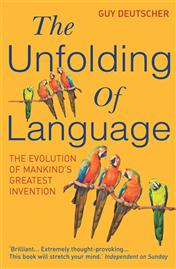 I have previously read Guy Deutscher‘s “Through the Language Glass“, and have now, topsy turvy, read his earlier book “The Unfolding of Language“. Both are about language, “The Unfolding of Language” about the development of the complexity of language that we see today from simpler origins, and “Through the Language Glass” about the interaction between language and thought. Both are full of sometimes witty and always fascinating examples drawn from languages around the world, from the Matses in the Amazon to Ancient Sumarian.
I have previously read Guy Deutscher‘s “Through the Language Glass“, and have now, topsy turvy, read his earlier book “The Unfolding of Language“. Both are about language, “The Unfolding of Language” about the development of the complexity of language that we see today from simpler origins, and “Through the Language Glass” about the interaction between language and thought. Both are full of sometimes witty and always fascinating examples drawn from languages around the world, from the Matses in the Amazon to Ancient Sumarian.
I recall my own interest in the origins of language began young, as a seven year old over breakfast one day, asking whether ‘night, was a contraction of ‘no light’. While this was an etymological red herring, it is very much the kind of change that Deutscher documents in detail showing the way a word accretes beginnings and ending through juxtaposition of simpler words followed by erosion of hard to pronounce sounds.
One of my favourites examples was the French “aujourd’hui”. The word ‘hui, was Old French for ‘today’, but was originally Latin “hoc die”, “(on) this day”. Because ‘hui’ is not very emphatic it became “au jour d’hui”, “on the day of this day” , which contracted to the current ‘aujourd’hui’. Except now to add emphasis some French speakers are starting to say “au jour aujourd’hui”, “on the day on the day of this day”! This reminds me of Longsleddale in the Lake District (inspiration for Postman Pat‘s Greendale), a contraction of “long sled dale”, which literally means “long valley valley” from Old English “slaed” meaning “valley” … although I once even saw something suggesting that ‘long’ itself in the name was also “valley” in a different language!
Deutscher gives many more prosaic examples where words meaning ‘I’, ‘you’, ‘she’ get accreted to verbs to create the verb endings found in languages such as French, and how prepositions (themselves metaphorically derived from words like ‘back’) were merged with nouns to create the complex case endings of Latin.
However, the most complex edifice, which Deutscher returns to repeatedly, is that of the Semitic languages with a template system of vowels around three-consonant roots, where the vowel templates change the meaning of the root. To illustrate he uses the (fictional!) root ‘sng’ meaning ‘to snog’ and discusses how first simple templates such as ‘snug’ (“I snogged”) and then more complex constructions such as ‘hitsunnag’ (“he was made to snog himself”) all arose from simple processes of combination, shortening and generalisation.
“The Unfolding of Language” begins with the 19th century observation that all languages seem to be in a process of degeneration where more complex forms such as the Latin case system or early English verb endings are progressively simplified and reduced. The linguists of the day saw all languages in a state of continuous decay from an early linguistic Golden Age. Indeed one linguist, August Schleicher, suggested that there was a process where language develops until it is complex enough to get things done, and only then recorded history starts, after which the effort spent on language is instead spent in making history.
As with geology, or biological evolution, the modern linguist rejects this staged view of the past, looking towards the Law of Uniformitarianism, things are as they have always been, so one can work out what must have happened in the pre-recorded past by what is happening now. However, whilst generally finding this convincing, throughout the book I had a niggling feeling that there is a difference. By definition, those languages for which we have written records are those of large developed civilisations, who moreover are based on writing. Furthermore I am aware that for biological evolution small isolated groups (e.g. on islands or cut off in valleys) are particularly important for introducing novelty into larger populations, and I assume the same would be true of languages, but somewhat stultified by mass communication.
Deutscher does deal with this briefly, but right at the very end in a short epilogue. I feel there is a whole additional story about the interaction between culture and the grammatical development of language. I recall in school a teacher explained how in Latin the feminine words tended to belong to the early period linked to agriculture and the land, masculine words for later interests in war and conquest, and neuter for the still later phase of civic and political development. There were many exceptions, but even this modicum of order helped me to make sense of what otherwise seemed an arbitrary distinction.
The epilogue also mentions that the sole exception to the ‘decline’ in linguistic complexity is Arabic with its complex template system, still preserved today.
While reading the chapters about the three letter roots, I was struck by the fact that both Hebrew an Arabic are written as consonants only with vowels interpolated by diacritical marks or simply remembered convention (although Deutscher does not mention this himself). I had always assumed that this was like English where t’s pssble t rd txt wth n vwls t ll. However, the vowels are far more critical for Semitic languages where the vowel-less words could make the difference between “he did it” and “it will be done to him”. Did this difference in writing stem from the root+template system, or vice versa, or maybe they simply mutually reinforced each other?
The other factor regarding Arabic’s remarkable complexity must surely be the Quran. Whereas the Bible was read for a over a millennium in Latin, a non-spoken language, and later translated focused on the meaning; in contrast there is a great emphasis on the precise form of the Quran together with continuous lengthy recitation. As the King James Bible has been argued to have been a significant influence on modern English since the 17th century, it seems likely the Quran has been a factor in preserving Arabic for the last 1500 years.
Early in “The Unfolding of Language” Deutscher dismisses attempts to look at the even earlier prehistoric roots of language as there is no direct evidence. I assume that this would include Mithin’s “The Singing Neanderthals“, which I posted about recently. There is of course a lot of truth in this criticism; certainly Mithin’s account included a lot of guesswork, albeit founded on paleontological evidence. However, Deutscher’s own arguments include extrapolating to recent prehistory. These extrapolations are based on early written languages and subsequent recorded developments, but also include guesswork between the hard evidence, as does the whole family-tree of languages. Deutscher was originally a Cambridge mathematician, like me, so, perhaps unsurprisingly, I found his style of argument convincing. However, given the foundations on Uniformitarianism, which, as noted above, is at best partial when moving from history to pre-history, there seems more of a continuum rather than sharp distinction between the levels of interpretation and extrapolation in this book and Mithin’s.
Deutscher’s account seeks to fill in the gap between the deep prehistoric origins of protolanguage (what Deutscher’s calls ‘me Tarzan’ language) and its subsequent development in the era of media-society (starting 5000BC with extensive Sumerian writing). Rather than seeing these separately, I feel there is a rich account building across various authors, which will, in time, yield a more complete view of our current language and its past.
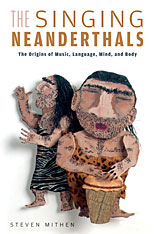 One of my birthday presents was Steven Mithin’s “
One of my birthday presents was Steven Mithin’s “
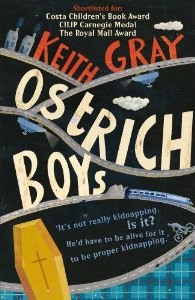
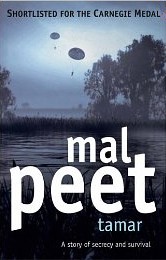
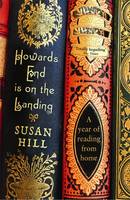
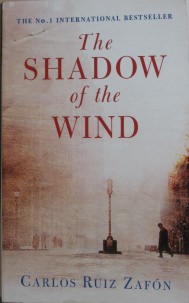 I’ve been reading “
I’ve been reading “
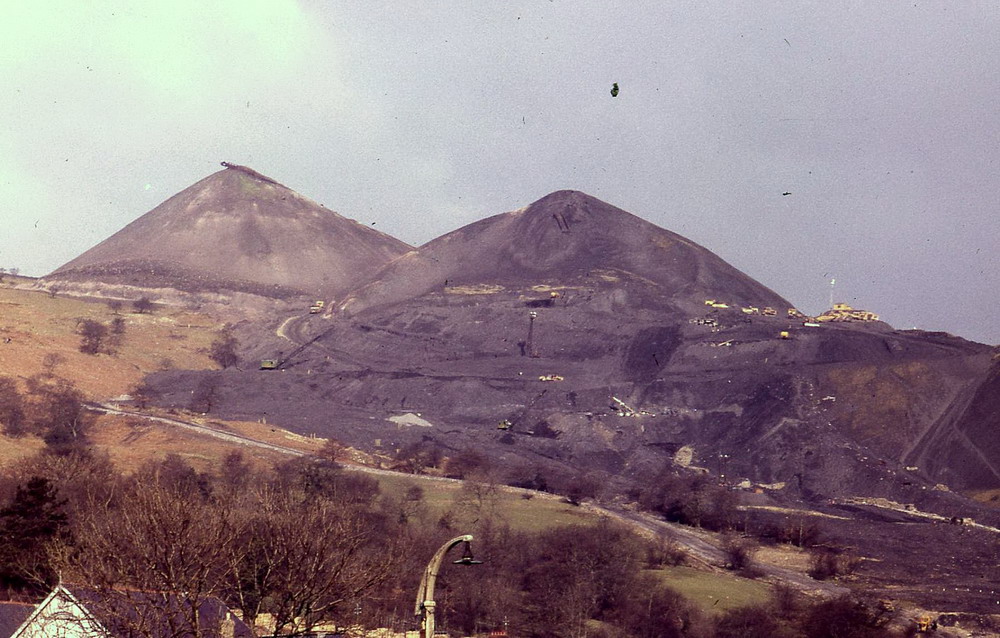




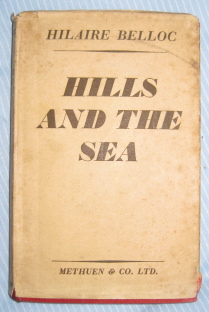
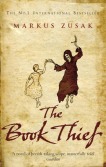 I have just finished reading Markus Zusak’s “
I have just finished reading Markus Zusak’s “